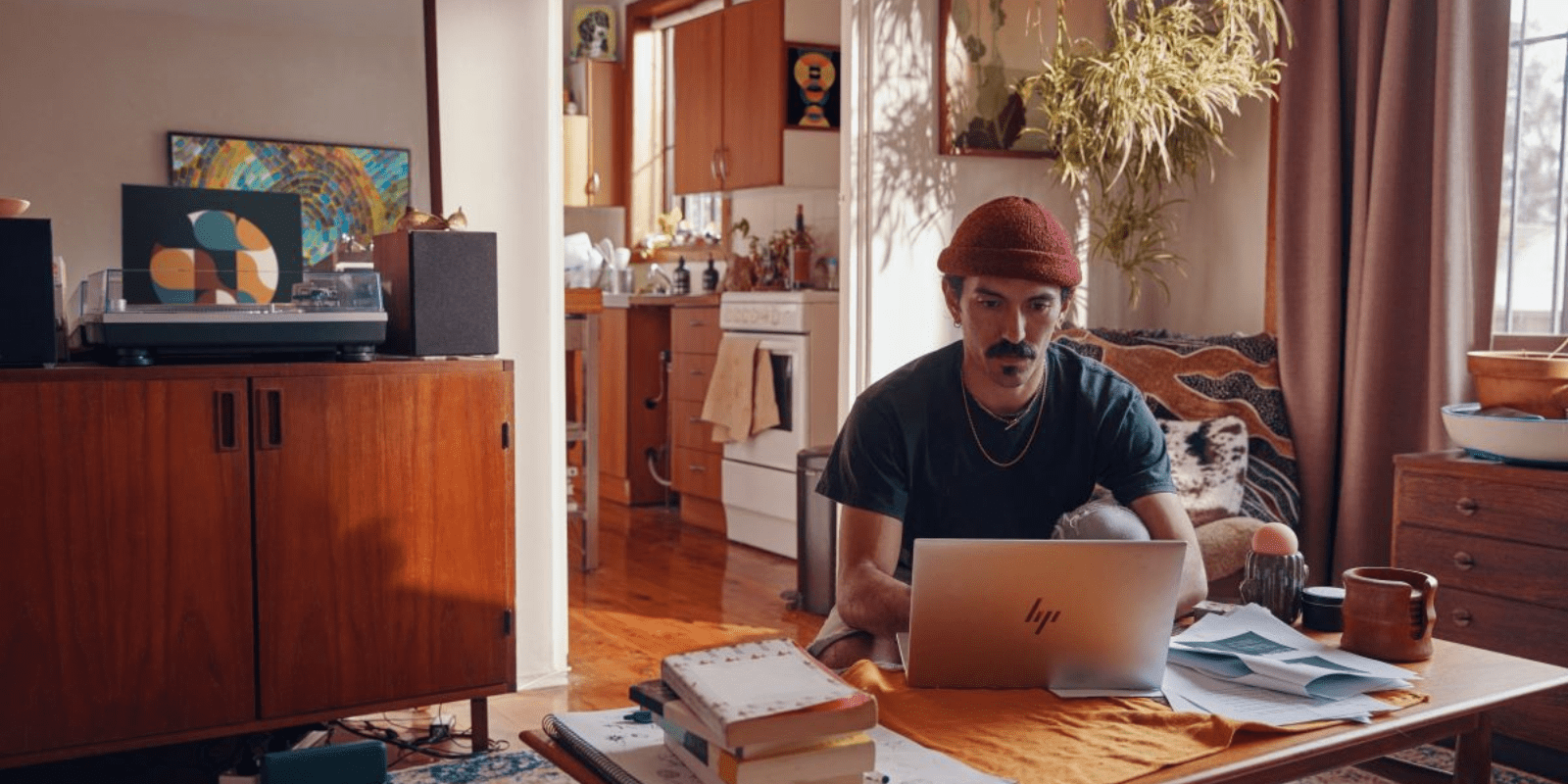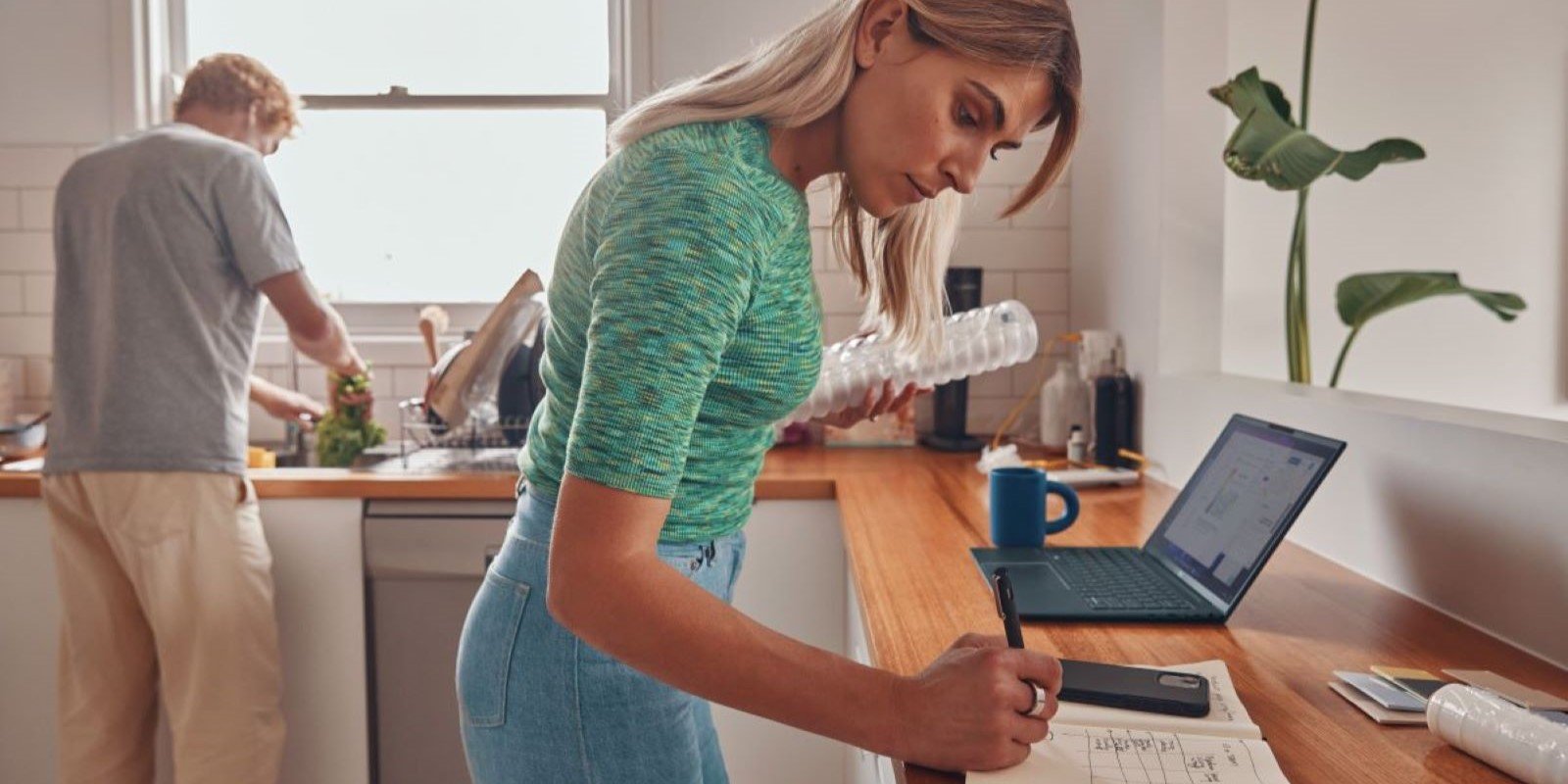Thank you for visiting the AUSTRALIA HP Store
-
Contact Us
CONTACT USCall us
- Sales
- 1300 540 516
- Technical support
- 13 23 47
Exc. pubic holidays
Chat with us- Our specialist are here to help
- Presales Live Product Demo
- Sales
- 61288061500 (WhatsApp)
-

- Post Sales
- 61288061700(WhatsApp)
Exc. pubic holidays
Live product demo
Submit feedback We value your opinion! - My Account
HP Laptop Battery Life: Tips and Tricks for Prolonged Use in Australia


Tired of continuously charging your laptop every few hours? A laptop’s battery life can be a deal breaker, especially if you travel a lot. HP laptops come with long battery life and built-in fast charging software for maximum productivity. However, there is always more that you can do to maximise performance.
This article aims to help you understand your laptop battery and implement best practices to improve battery health and prolong its life.
Understanding HP Laptop Batteries
HP laptops typically contain Lithium-ion polymer batteries. The battery generates electricity through a chemical reaction between two electrodes (a cathode and an anode), separated by an electrolyte. The cathode is made from a lithium-based material, and the anode is usually made from carbon (graphite).
Lithium ions move between the anode and cathode through the electrolyte. It is a gel-like polymer that gives more flexibility in battery design. Thanks to the polymer, you get ultra-thin but powerful batteries that support HP laptops' slim and compact design. Besides being lightweight, Li-poly batteries don't “leak” and are safer to use. Lithium ions discharge very slowly when not in use, prolonging battery life.
Your HP laptop may contain 2-cell, 3-cell, 4-cell or 6-cell Li-ion polymer batteries. A cell refers to a single battery unit containing the cathode, anode, and electrolyte. HP combines multiple cells to increase battery capacity. 2-cell batteries provide 47 Wh (Watt-hour) capacity. If your laptop consumes 20W on average, it could run continuously for 2.5 hours without recharging. In contrast, a 6-cell battery provides an 86-watt-hour capacity that can last closer to 5 hours - you only need to charge it once in your work day.
Of course, the above example is theoretical. Usually, battery life specifications are described in continuous video playback hours. Even while playing videos continuously, laptops typically use much less than 20 W power. For example, the HP Spectre X360 has a 4-cell, 68 Wh Li-ion polymer and can play videos continuously for 17 hours before it runs out of charge!
Best Practices for Maintaining Battery Health
Irrespective of battery manufacturing, your battery life ultimately comes down to usage. Here are some best practices you should follow.
Limit full discharge
Every battery has limited charge cycles (typically between 300 and 500 for most laptop batteries). One cycle is a complete discharge and recharge. As a general rule, avoid letting your battery hit 0 so your laptop shuts down. It's better to recharge your battery when it drops to around 20-30% rather than allowing it to deplete completely. Limiting full discharge extends battery life.
Calibrate regularly
While frequent total discharges are to be avoided, they must be done occasionally for battery calibration. This is not a hardware issue but a software calibration. What happens is over time, your battery works fine, but your operating system “thinks” that it does not. This causes issues such as sudden shutdowns or improper battery status alerts. Battery calibration restores accurate readings and improves the device's power management.
Steps to calibrate:
-
Charge the battery to 100% and leave it plugged in for a few extra hours to ensure a complete charge.
-
Once fully charged, disconnect the charger and use the laptop until the battery is completely drained. Allow it to power off due to a lack of battery.
-
Leave it off for a few hours so any residual charge dissipates.
-
Plug the charger back in and fully charge the battery again to 100% without interruptions. Avoid using the laptop during this phase.
-
Restart the laptop.
We recommend you do the above at least once every 3-4 months for optimum health.
Avoid overcharging
HP laptops come with smart charging technology that helps manage charging cycles. However, keeping the battery at 100% for extended periods can strain the cells. It's advisable to unplug the charger after a full charge or use battery management settings to stop charging at around 80-90%.
Manage environment temperature
Batteries perform best at room temperature. Extreme heat or cold can reduce battery life. For example, avoid leaving laptops in hot cars or exposing them to direct sunlight for prolonged periods.
Storing your HP Laptops
Proper storage of laptops when not in use is essential to maintain battery health. Here are some tips:
-
Charge to 50% before storing.
-
Store the laptop in a location with temperatures between 10°C to 35°C.
-
Keep the laptop in a dry environment with low humidity. (30%-50%)
-
Unplug the power adapter from the laptop to prevent accidental power surges.
If storing the laptop for an extended period, recharge the battery every three months back to 50% to prevent deep discharge.
Optimising Settings for Prolonged Battery Life
You can adjust various settings to prolong the battery life of your HP laptop.
Power Plan Settings
Your operating system provides power consumption settings. Go to Control Panel > Power Options and select a power plan like “Balanced” or “Power Saver.” Customise as follows.
-
Reduce the time before the display turns off when inactive (2-5 minutes).
-
Shorten the time before the laptop sleeps when idle (5-10 minutes).
-
Configure the laptop to hibernate instead of sleep when inactive for longer.
Power-Saving Settings
Enable the Battery Saver feature (under Settings > System > Battery) to automatically reduce background activity and limit notifications when your battery drops below a certain level (e.g., 20%).
Display Settings
The laptop's display is one of the biggest power consumers, so optimising its settings can dramatically reduce battery drain. Many laptops have light sensors that adjust screen brightness based on ambient light. Go to Settings > System > Display and toggle “Change brightness automatically when lighting changes”.
Also,
-
Set a shorter time for your display to turn off when the laptop is idle.
-
Enable “dark mode” to reduce power usage, as dark pixels use less energy. (Settings > Personalisation > Colors).
CPU Settings
Background apps and unnecessary processes drain your laptop’s battery quickly. Go to Settings > Privacy > Background Apps and disable apps that don't need to run in the background. Use Task Manager (Ctrl + Shift + Esc) to see which programs are consuming the most resources and end unnecessary tasks. Navigate to the Startup tab, and turn off programs that don’t need to run at startup.
Disable push notifications and alerts that can activate the screen and consume power. Go to Settings > System > Notifications & Actions, and turn off notifications for apps that don’t need them.
Wi-Fi/Bluetooth Settings
Turn off Wi-Fi and Bluetooth if you don’t need them, as they continue to draw power even when idle. This can be done via the system tray. If you don’t need internet access, use Airplane Mode to turn off all wireless communication, significantly saving battery.
Other settings
-
Remove software you no longer use to free up resources and improve efficiency. (Settings > Apps)
-
Close unnecessary browser tabs in browsers.
-
Opt for lightweight alternatives to software that may be resource-intensive. For example, instead of a heavy desktop app, use a web-based version requiring fewer resources.
We summarise all the settings in the table below.
| Settings | Value |
|---|---|
| Settings | Value |
| Control Panel > Power Options | Choose "Balanced" or "Power Saver," |
| Settings > System > Battery | Enable Battery Saver |
| Settings > Personalisation > Colors | Enable dark mode |
| Settings > Display | Enable auto-brightness |
| Settings > Privacy > Background Apps | Disable background apps |
| Settings > System > Notifications & Actions | Disable unnecessary notifications |
| Task Manager > Startup | Disable unnecessary startup apps |
Common Battery-Draining Habits to Avoid
Leaving your laptop plugged in constantly. HP laptops are designed to prevent overcharging, but continuous exposure can still stress the battery and degrade its capacity.
Unnecessary high-performance settings. High-performance modes are designed to maximise processing power, which increases energy consumption and reduces battery life. Use them for demanding tasks like gaming or video editing, but avoid them for everyday tasks such as browsing or document editing.
Too many connected peripherals. Peripherals like USB drives, external hard drives, keyboards and mice draw power from your laptop, even when they are not actively in use. Replace them with energy-efficient accessories and consider using a powered USB hub to reduce the load on your laptop’s battery.
HP Tools for Battery Life Management
HP provides several tools and features that you can use to optimise battery life further.
HP Power Manager
HP Power Manager offers various power settings that allow users to customise how their notebooks use power. You can manage settings to balance performance with battery conservation. The tool provides options for selecting power-saving modes, adjusting power plans, and viewing detailed battery usage reports.
HP Support Assistant
HP Support Assistant is a built-in tool that is included in all HP laptops and notebooks. You can use it to perform diagnostic tests to check the battery’s health status and receive insights into its performance. Access HP Battery Check or BIOS settings to review essential metrics such as charge cycles, capacity, and overall battery health. Regular monitoring helps identify potential issues early on.
You can also check and install firmware updates through the HP Support Assistant. Enable automatic updates so your laptop always has the latest improvements.
HP Products and Accessory Recommendations
Curious about which HP products and accessories support maximum battery life? Here are our top recommendations.
HP Laptops
All HP laptops come with integrated fast-charge and battery protection software alongside the built-in tools described above. For example,
The HP Spectre x360 is designed with a high-capacity battery and adaptive battery technology that learns your usage patterns to optimise power consumption.
The HP EliteBook Series is tailored for business professionals who require reliable battery performance throughout their workday. You get efficient energy consumption, even when running multiple applications and connected to various peripherals.
The HP Envy Series laptops have energy-efficient processors and displays that help conserve power without compromising performance.
The battery specs summary explains what you can expect from these laptops.
| Series | Battery type | Power supply type | Battery life (Video playback hours) |
Recharge time |
|---|---|---|---|---|
| HP Spectre x360 | 4-cell, 68 Wh Li-ion polymer | 65 W USB Type-C® power adapter | Up to 17 hours | 50% in 45 minutes |
| HP EliteBook Series | 3-cell, 59 Wh Li-ion polymer | 65 W USB Type-C™ adapter | Upto 10 hours | 50% in 30 minutes |
| HP Envy Series | 4-cell, 55 Wh Li-ion polymer | 65 W USB Type-C® power adapter | Up to 12 hours and 45 minutes | 50% in 30 minutes |
HP Power Accessories
HP offers various power accessories designed to help maintain and extend battery health. For example
HP USB-C 65W Laptop Charger allows for rapid laptop recharging. It minimises downtime and fully charges your laptop during your lunch break.
HP Travel USB-C Multi-Port Hub provides connectivity options with power delivery. Keep your laptop charged, connect to various peripherals and access the internet while you travel.
HP 65W GaN USB-C Laptop Charger provides fast charging for multiple devices but is small and compact for travel.
Conclusion
HP laptops come with cutting-edge battery specifications to maximise battery life and reduce recharge time. However, as the user, it is your responsibility to take care of your laptop. Configure your operating system, keeping battery life in mind. Avoid rookie mistakes like over-charging your battery or leaving it in a hot room. Calibrate regularly and remove peripherals when not in use. With the right care, your laptop will last you decades without any hassle!
- Sales
- 1300 540 516
- Technical support
- 13 23 47
Exc. pubic holidays
- Our specialist are here to help
- Presales Live Product Demo
- Sales
- 61288061500 (WhatsApp)
-

- Post Sales
- 61288061700(WhatsApp)
Exc. pubic holidays
Live product demo







